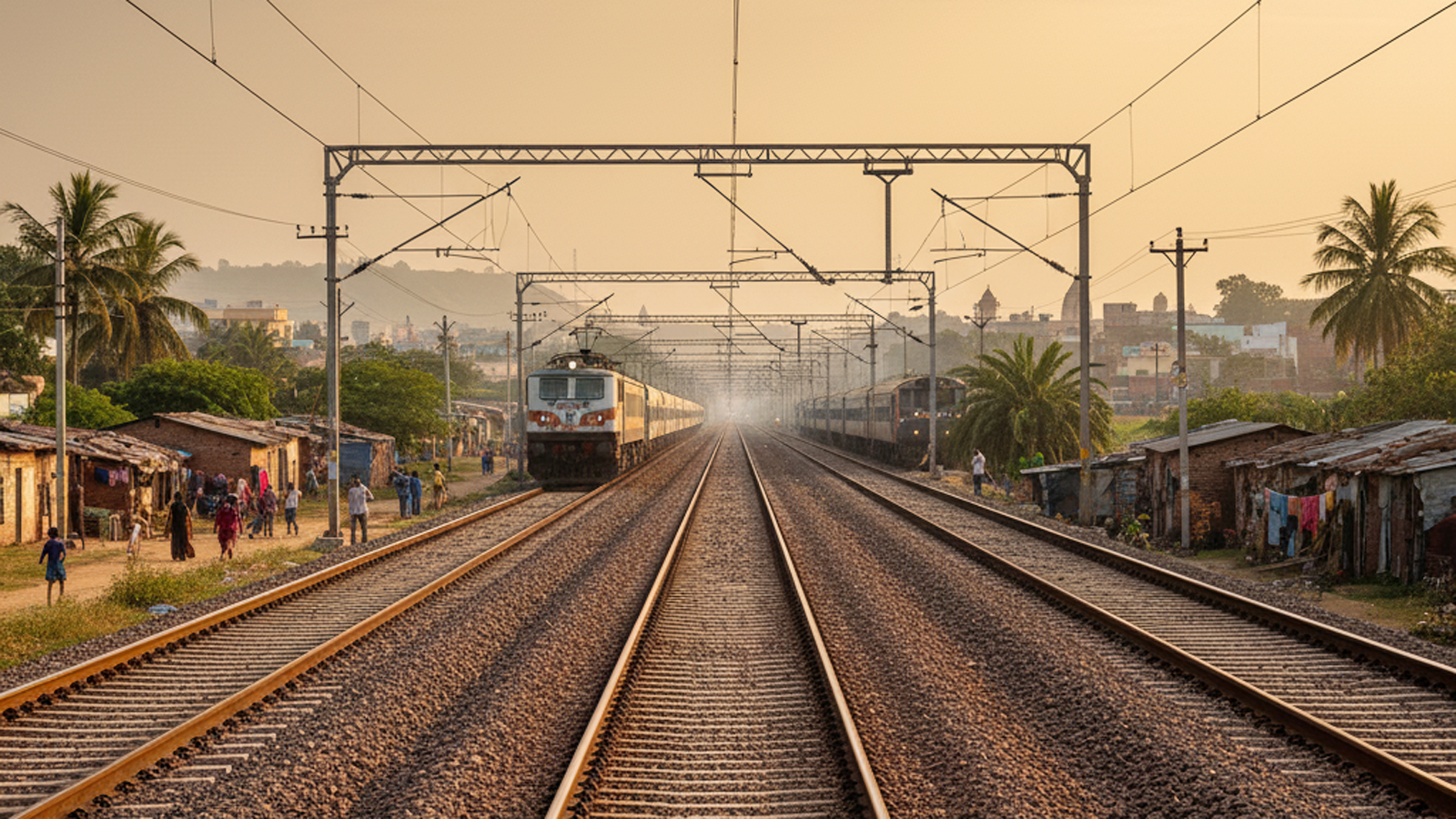Indian Railways is undergoing one of the most ambitious modernisation programmes in its history, with massive infrastructure expansion and cutting-edge technological upgrades aimed at transforming the country’s transportation landscape.
Union Railway Minister Ashwini Vaishnaw said that 35,000 kilometres of new railway tracks have been constructed and 46,000 kilometres electrified over the past 11 years. During the same period, around 40,000 new coaches were manufactured, significantly boosting India’s capacity to deliver safe, efficient and sustainable passenger services.
“The last 11 years under the leadership of Prime Minister Narendra Modi have seen a strong focus on modernising Indian Railways, and the results are visible. The transformation is phenomenal,” Vaishnaw said at the International Railway Equipment Exhibition 2025 (IREE) in New Delhi.
Highlighting rapid progress on India’s first bullet train project, the minister said that 325 kilometres of track have already been completed. “I recently visited Surat and Bilimora stations, which will be part of the first operational section to open in 2027,” he noted.
India’s fleet of modern trains has also expanded rapidly. The network now includes 156 Vande Bharat Express services, 30 Amrit Bharat Express services, and four Namo Bharat services.
Looking ahead, the government plans to build around 7,000 kilometres of dedicated passenger corridors by 2047 under the Viksit Bharat vision, ensuring faster and more reliable services to meet the needs of a growing population.
At the heart of the modernisation push is the upcoming launch of Vande Bharat 4.0 – a next-generation train designed to match and surpass global standards in comfort, speed and technology. “We must reimagine Vande Bharat with completely new technology and set benchmarks on all parameters,” Vaishnaw said.
The upgraded trains will feature improved toilets, enhanced seating, superior coach workmanship and state-of-the-art passenger amenities. The rollout is targeted within the next 18 months.
India currently operates Vande Bharat 3.0, which accelerates from 0 to 100 kmph in 52 seconds, faster than most international counterparts. But Vaishnaw emphasised that the next version will “take it to the next level.”
Parallel upgrades are planned for Amrit Bharat trains, with the transition to Amrit Bharat 4.0 featuring push-pull locomotive technology and fully redesigned coaches. New-generation passenger locomotives are expected to be ready for testing within 36 months.
On the safety front, Kavach 4.0 – India’s indigenous automatic train protection system – has been approved for large-scale deployment. Kavach 5.0, currently under development, will support trains running at speeds of up to 350 kmph.
“The time has come to build dedicated passenger corridors,” the minister said, underlining the need for capacity expansion to serve India’s 1.4 billion people.
Vaishnaw also announced the successful development of a 2400-horsepower hydrogen-powered train entirely indigenously. “We will not import this technology. We will design it ourselves,” he said, calling it a major milestone in India’s green mobility journey.
Reiterating the government’s emphasis on quality and safety, Vaishnaw warned suppliers that those failing to meet standards could face blacklisting. “Railways must procure the best in the world to meet the expectations of modern India,” he added.
Commending the Confederation of Indian Industry for organising IREE, the minister urged it to scale up the exhibition to surpass InnoTrans in Germany. “India deserves a bigger global railway conference and exhibition that covers every aspect of transportation – from technology and design to software and high-speed networks,” he said.
With major strides in infrastructure, safety, sustainability, and technology, Indian Railways is positioning itself for a transformative leap – one designed not only to meet domestic mobility demands but also to establish India as a global leader in modern rail systems.
(With agency inputs)














